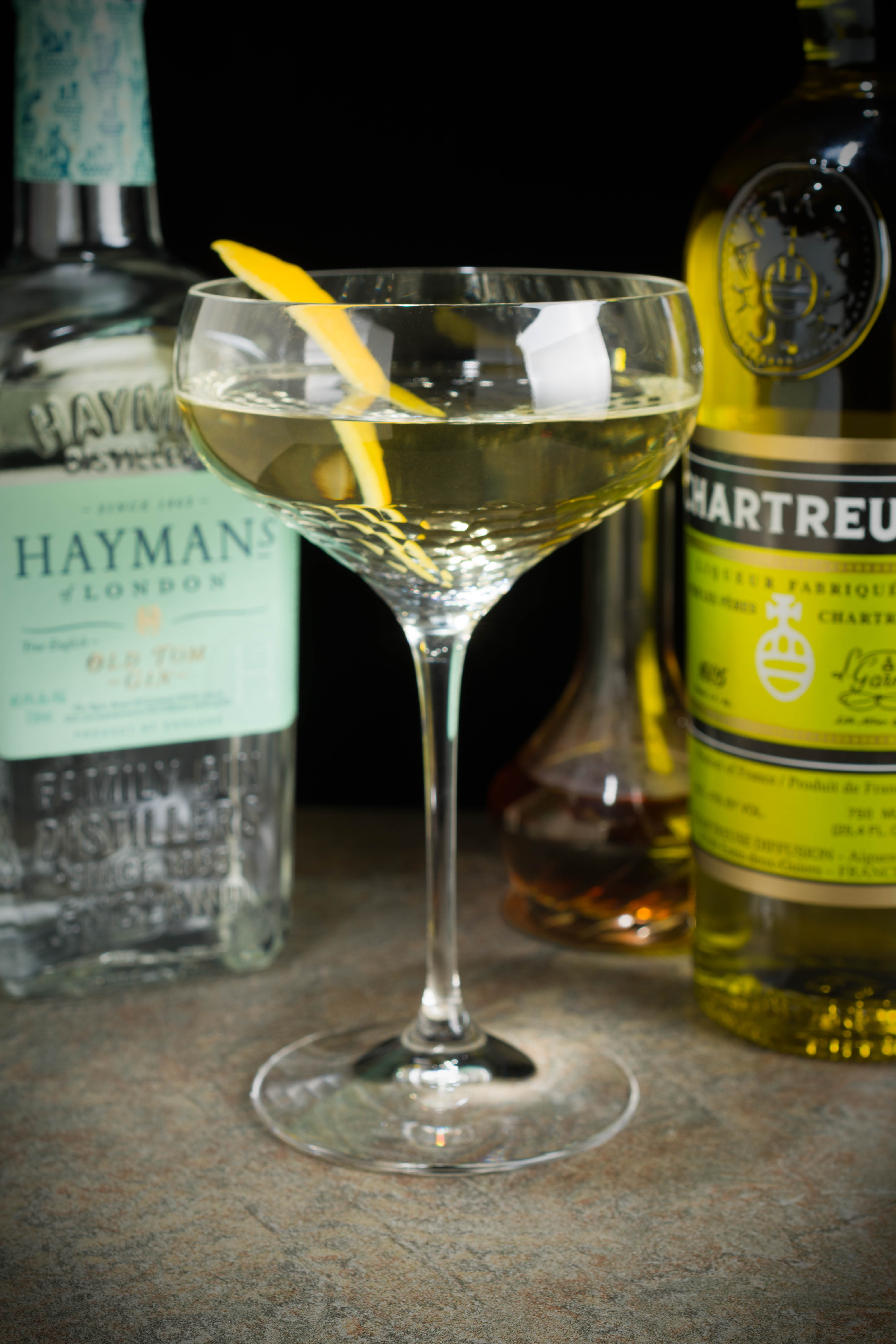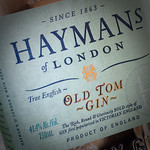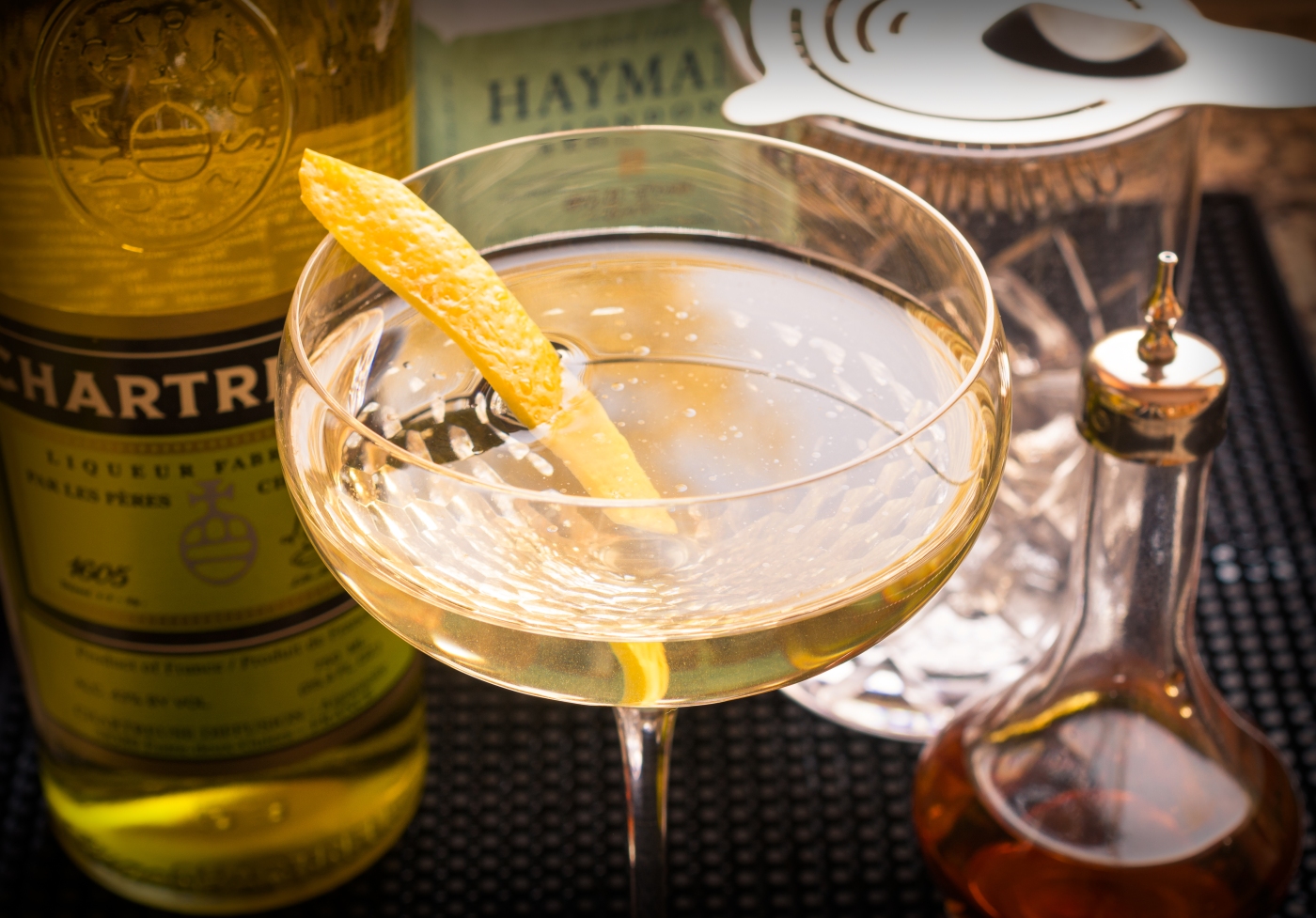Some cocktails are just not destined to join the ranks of the classics. Some deserve fame, most don’t; some just have plain bad luck.
One that deserved a smoother ride: the Alaska Cocktail.
You’d think a cocktail designed as a complex and sweetish spin on the Martini would have an easy shot at success.
But it wasn’t to be.
When Jacques Straub first published the Alaska formula in 1913, it was a straightforward upscaling of the classic Martini — gin, liqueur and bitters. Even the name — “Alaska” — was meant to evoke the celebrity of the United States’ newest gold rush territory.
Classic on the face of it, the Alaska combines two problematic ingredients: the gin was Old Tom, popular at the time, but doomed to be a victim of Prohibition; the liqueur, standing in for the Martini’s traditional vermouth, was Yellow Chartreuse, notoriously big-flavored, aggressively herbal, and challenging to mix — a polarizing ingredient, to say the least.
What could go wrong…?
The demise of Old Tom
“Go away and don’t come back.”
That’s basically what the Prohibition-era drinking public told Old Tom gin. Tom and his malty, sweeter, and even more popular cousin Holland’s gin — what we now call genever — had commanded the nineteenth century gin space. Tom was traditionally pot stilled, long on herbs and spices, and sweetened with sugar or herbal additives.
By the 1890s, the lighter and generally unsweetened “dry” gin (the style we now call London Dry or Plymouth) was gaining a following. Column stills made dry gin possible by the mid-1800s, and by the first decade of the 1900s it was well along in establishing itself as the preferred gin style in the United States, as drinkers’ tastes trended toward drier and lighter spirits and cocktails.
The industrial chaos that was Prohibition sped Tom’s demise; during the 1920s, Old Tom became Dead Tom as dry gin dominated the industry. For the next 90 years, the dry style was the gin drinker’s only choice.
As early as 1923, Harry McElhone, bartending in Paris by then, had already abandoned Old Tom for Gordon’s Dry in his ABC of Mixing Drinks. The proportions wiggled about a bit over the next few years — Charles Embury, in his Fine Art of Mixing Drinks (1948), suggested as much as 7 parts (dry) gin to 1 part Chartreuse — but by then there was no Old Tom, and there was no going back. Classic formulas suffered.
Here’s the problem: Yellow Chartreuse and dry gin don’t play well together. Flavor-wise, it was an unbalanced mess; dry gin is too ascetic to tie all the flavors together. Texture-wise, it was boring. Conceptually, it was a Martini with something wrong with it. Drinkers and bartenders noticed, but there was nothing they could do about it; the Alaska Cocktail, dependent on Old Tom (and on increasingly unobtainable orange bitters), dropped out of circulation, and existed mainly as filler in the pages of bar manuals for the rest of the century.
It wasn’t until the cocktail renaissance — say around 2000 — that the Alaska started to get any notice again, but it took years for it to be more than an appealing historical curiosity. Hayman’s of London resuscitated their nineteenth century Old Tom gin process around 2007. Within a few years, Ransom Spirits of Oregon began producing an aged Old Tom, and the market has grown from there.
The Alaska, 90 years a zombie, was once again a thing.

The demise of Yellow Chartreuse
But that didn’t last for long.
Now, less than fifteen years later (and with plenty of Old Tom in production), Yellow Chartreuse has become the troublesome component, and the Alaska is on the verge of dying again.
Back around 2021 or so, bartenders and retailers started noticing that the supply of Chartreuse was unreliable (as in vanishing). Lots of things became hard to find during the pandemic, with supply chain and labor problems, but it seems the Chartreuse shortage may be a result of a different thing; some sources suggest a conscious ecological production cutback by the monks who control Chartreuse.
There’s no way to tell if Yellow Chartreuse will disappear, but already it’s hard to find. It’s conceivable that before long the reduced supply will be available only through inflated prices and allocations, or snapped up entirely by deep-pockets bars, hoarders, and collectors. If it happens that way, it will be for a sad day for the rest of us, and for cocktails like the Alaska. Yellow Chartreuse is a product with no proper substitute.
Based on Jacques Straub, Straub’s Manual of Mixed Drinks, 1913
- 3 oz (90ml) Old Tom gin (Hayman’s Old Tom)
- ¾ oz (25ml) Yellow Chartreuse
- 2 dashes orange bitters (Regan’s No. 6 Orange Bitters)
Stir with ice until cold; as Straub advised: “Serve in cocktail glass unless otherwise specified.” Straub did not garnish; I recommend expressing lemon peel. Serve very cold.
I think of the Alaska Cocktail as my winter Martini — like its classic model, the Alaska is clear, cold, and party-esque, but with a rounder, sweeter, herb-and-spice laden, mellow approach to the cocktail hour.
Straub’s original Alaska was a 2:1 formula with a dash of orange bitters and no garnish. I like a 3:1 or 4:1 ratio. I think we have David Embury to thank for the idea of the lemon twist garnish; it’s a good addition.

The last decade or so has seen a handful of Old Tom gins hit the market, so you may have multiple choices. Hayman’s and Ransom seem to be the most widely distributed. Of the Toms available in my market, I prefer the unaged, slightly sweeter Hayman’s for this drink.
Yellow Chartreuse is the element that will decide if you like this cocktail. It’s complex and something of a shapeshifter, reputed to be infused with around 130 botanicals and spices, so there’s sure to be something in there you’ll have to get used to. For me, the nose has a piney, vaguely floral sweetness, and the taste is sugary anise and an undecipherable general herbality.
Overall, the Alaska is sweetish and floral. The nose is strongly herbal, and if you choose to garnish with a lemon twist, the lemon oil will imbue the air above the glass. The first sip provides cold, malty herbality, followed by a mild honey sweetness and an increasing sense of alpine flowers; more time delivers more of Old Tom’s maltiness. The long taste leaves a sense of sweetness, lingering malt, and finally a bit of juniper coming through from the gin.
The Alaska will never achieve the first tier of cocktail celebrity; it will always be too sweet for some because of the Old Tom, or too complex or eccentric for others because of the Chartreuse. It’s one of those drinks that people either love or hate, and is unlikely to gain more than niche acceptance. It has grown on me over the years, probably because my tastes have changed; it’s a better cocktail than I gave it credit for, and I’d hate to see it disappear again before it can be discovered, or rediscovered, by others. I wish it a long, if quiet, life.
“A martini with something in it — the Alaska Cocktail” at cold-glass.com : All text and photos © 2023 Douglas M. Ford. All rights reserved.

Excellent article. Good to see you publishing again! Thank you, Doug!
Thanks, Mike. It’s good to be writing again, and the Alaska was a good place to start.
Nice to see a new posting, Doug! Great presentation of changes in the spirits industry through one cocktail…
Thanks, glad you enjoyed it.
Great post! I can”t even find Green Chartreuse lately…
Yeah, both yellow and green are thin on the ground right now. Still hoping it gets better. Thanks for reading Cold Glass.
Wonderful surprise on a Monday morning to see a new post. It would be very sad to not have Green and Yellow Chartreuse in my liquor cabinet, but I’ll resist hoarding… for now.
Sounds refreshing… never even heard of chartreuse
Yeah, it’s hard to resist, isn’t it… Thanks for reading!
Speaking of missing alcohol… Anyone know what happened to Noilly Pratt DRY vermouth? Is vanished around 2019 I think and we now use NP extra dry but it has never been the same although we are used to it by now. We have tried what other few dry vermouth is available but meh…not right. I’ve re-signed up for your posts, so keep’em coming!!
Another marketing decision, I guess. I remember when NP dry went away, too. I’ll do my best to keep writing!
Super pleased to see this post because your work is fabulous and candidly has made my life better for many years. Re this recipe and yellow chartreuse, I recently picked up a bottle of Strega, as a possible substitute for yellow chartreuse. I unfortunately don’t have old Tom gin, nor genever currently in my liquor cabinet, but I’ve enjoyed playing a little bit with the Strega in a couple of recipes … such vibrant flavors! This Alaska recipe is very intriguing, and I may obtain some old tom or genever to try this. I thank you again.
What an uplifting message, thank you. As for genever, I made a version of the Alaska with Bols aged genever, and it was delicious. I wonder that Straub didn’t make the Alaska with it (Hollands, as he would have called it) in the first place. It’s lush, and ties together even better than with Old Tom.
Thanks for reading Cold Glass!
Glad to see you back, Doug. I’ve known the Alaska for ages, but always with London Dry Gin and Chartreuse Verte. This was intriguing, and the shortening of Charteuse supply disturbing, so I invested in several bottles of each colour. But then …. no Old Tom. So I riffed on it by using 2oz dry gin and 1oz of my own Sandalwood infused gin (I make it on a bodega-like process with dry gin and sandalwood powder). The outcome was a lovely, orientally fragranced and flavoured (apt as I live in Hong Kong) drink. I eschewed the lemon oil on this first run, wanting to gauge the impact of the sandalwood. I think it will take the garnish, but I’m leaning towards expressing lime peel, rather than lemon. Best regards, Philip
Thanks, it’s good to be writing.
So you have lots of Chartreuse and no Old Tom; here we have miles of Old Tom and no Chartreuse. Go figger…
Your gin infusion sounds interesting; I’ve never infused sandalwood into anything. If it provides a sense of sweetness, you’re pretty much traveling the path of many of the Old Tom distillers, who often sweetened their distillate with herbs and flowers. I hope it makes a great cocktail for you.
Updating: the lime oil expression worked well, but this evening I tried Californian Meyer lemon – turned out to be a superb balancer of all those herbal, spiced, scented, honeyed notes. And also turns out that Meyers are not technically lemons at all and are native to China. So, in honour of all those Chinese gold-diggers, maybe I should give my riff its own name – the Gum San (Gold Mountain in Cantonese, their original name for California )
So happy to see “1 unread” under cold glass in my rss reader! Welcome back Doug. Re: the yellow chartreuse – I pick up a saffron note in it among everything else kind of thing things together.
Thanks! As for saffron, I know it’s supposed to be in the Yellow Chartreuse mix somewhere, but I have never learned to pick out that flavor. There’s always something more to work on…
Glad to see new article! Alaska is the one my favorite /Martini-slyle/ cocktail. Strange to hear Chartreuse became hard to find. Here, in Russia, there are ‘no problemo’ with the liquer, but Old Tom is still kind of problem(( Hope to more frequent updates! ;)
Thanks! Interesting about your Old Tom shortage; another reminder that every market is different.
Lovely to see a new post from you, Doug! I always learn so much from your articles. I second the earlier comment that Strega would make a good substitute for Yellow Chartreuse; they are very similar in overall profile. Angelica is the predominant flavor, but there are a lot of herbs going on. I look forward to experimenting with the Alaska!
I’m going to have to try it with Strega, too. Thanks!
Hi Doug, Interesting article on the Chartreuse shortage: https://vinepair.com/articles/chartreuse-shortage-explained/?utm_source=The+Drop+by+VinePair&utm_campaign=d53b11cda7-March_28_2023&utm_medium=email&utm_term=0_b653fb8c99-d53b11cda7-48042047&mc_cid=d53b11cda7&mc_eid=613a69558a
Also, here it is straight from the horse’s mouth:
All the best, Marc Wexler
Hi, Mark, thanks for adding that link. I guess allocation is the way of the future for Chartreuse. Can’t blame the monks, they’re doing what they think is right, but it looks like the rest of us get a permanently tight market. Alas!